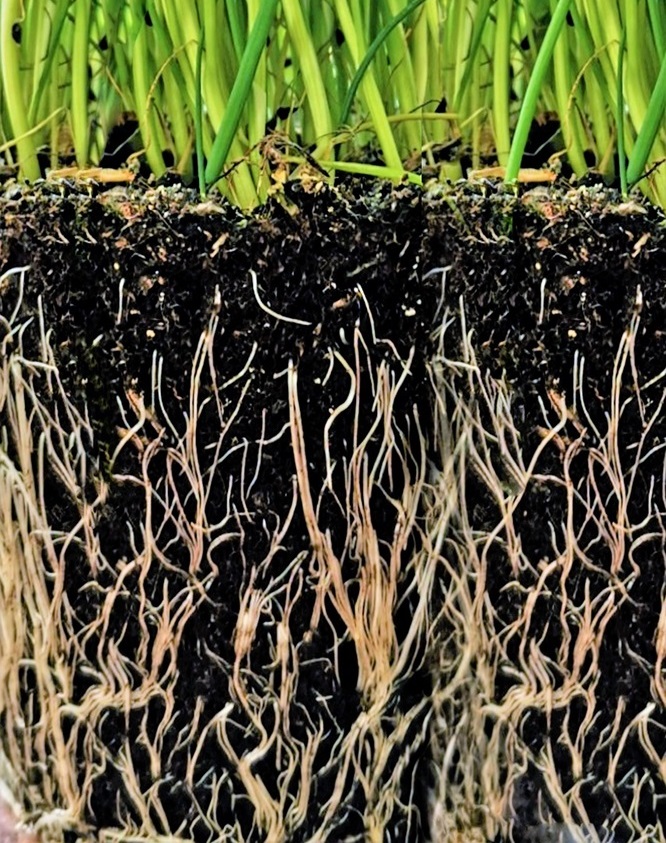
A new critical review, published in the journal CABI Agriculture and Bioscience, highlights the emergence and scientific basis of regenerative agriculture – proposing a working definition centred on ecological cycles and farm system outcomes.
Dr Nicholas Bardsley, author of the paper from the Department of Agri-Food Economics and Marketing at the University of Reading, suggests that as global agriculture faces intensifying soil degradation, climate disruption, and ecological breakdown, there is a need for a deeper re-evaluation of how food is produced and what it means to farm regeneratively.
Drawing from peer-reviewed science, grey literature, practitioner perspectives, and the latest soil ecology, the review examines the rise of regenerative agriculture (RA) and its potential to transform farming systems from extractive to restorative.
The review offers a critical yet constructive assessment of RA’s practices, definitions, and evidence base, positioning it as a farmer-led, soil-cantered movement grounded in the principles of ecological restoration.
Redefining regenerative agriculture
While regenerative agriculture is gaining traction globally, its definition remains contested, Dr Bardsley in the review suggests. He posits that it is farming geared towards working with and enhancing natural nutrient, carbon, and hydrological cycles for agricultural benefit.
This is grounded in research with self-identified RA farmers, as well as soil science literature and agroecological theory. Rather than prescribing specific methods, it emphasizes observable outcomes – improved soil function, biological activity, and resilience – allowing flexibility across farming contexts.
Scientific foundations and soil as a living system
The review synthesizes emerging insights from soil science that challenge conventional models of soil formation and fertility. Whilst it is often assumed that soil degradation is irreversible, recent evidence shows that biological processes – particularly those driven by plant-microbe interactions – can rebuild soil organic matter and structure far more rapidly than once believed.
It is suggested that RA’s practices – such as cover cropping, zero or minimal tillage, livestock integration, and biological inputs – tap into these processes, enabling the regeneration of the “soil food web” and the reactivation of nutrient and water cycles.
Regenerative farmers are not just conserving what’s left—they’re striving to rebuild what’s been lost, the review highlights.
Ecological and societal co-benefits
Indeed, the review outlines a range of co-benefits associated with regenerative agriculture, includingenhanced carbon sequestration and potential climate change mitigation; reduced reliance on synthetic inputs, lowering emissions and pollution; biodiversity restoration, both above and below ground; improved resilience to drought, disease, and economic volatility; and possible public health benefits via improved crop quality and soil microbiome exposure.
The review notes growing scientific interest in links between soil health, crop nutrient density, and human health outcomes – highlighting RA’s potential to contribute to broader public goals.
Challenges to adoption and policy blind spots
Despite its promise, the paper highlights systemic barriers to wider uptake of RA. These include the lack of long-term public research funding for systems-level trials, narrow conceptions of evidence-based practice, and policy frameworks – like the UK’s Environmental Land Management scheme – that fall short of incentivizing whole-system change.
Certification and market-based approaches are critiqued for the risk of greenwashing, with the review warning that co-option of the “regenerative” label could dilute its ecological integrity. It calls for place-based support and experimentation, prioritising farmer knowledge and ecological monitoring.
A New Paradigm?
The review suggests that regenerative agriculture is not a set of technical tweaks, but a new paradigm grounded in systems thinking and ecological reciprocity. By recognizing living processes as central to soil regeneration, RA challenges dominant assumptions in both science and policy.
The paper closes by urging funders, researchers, and institutions to invest in systems-level research that reflects the complexity of farming ecosystems—and to centre regenerative farmers as agents of ecological knowledge and innovation.
Additional information
Main image: As global agriculture faces intensifying soil degradation, climate disruption, and ecological breakdown, there is a need for a deeper re-evaluation of how food is produced and what it means to farm regeneratively (Credit: Pixabay).
Full paper reference
Bardsley, N, ‘Regenerative Agriculture: its Meaning, Rationale, Prospective Benefits and Relation to Policy,’ CABI Agriculture and Bioscience, 21 August 2025, DOI: 10.1079/ ab.2025.0062
The full review can be read here: https://www.cabidigitallibrary.org/doi/10.1079/ab.2025.0062
About CABI Agriculture and Bioscience
CABI Agriculture and Bioscience is an open access journal publishing high-quality, rigorously peer-reviewed multi-, inter- and transdisciplinary research focused on agriculture, food security, and the environment.
